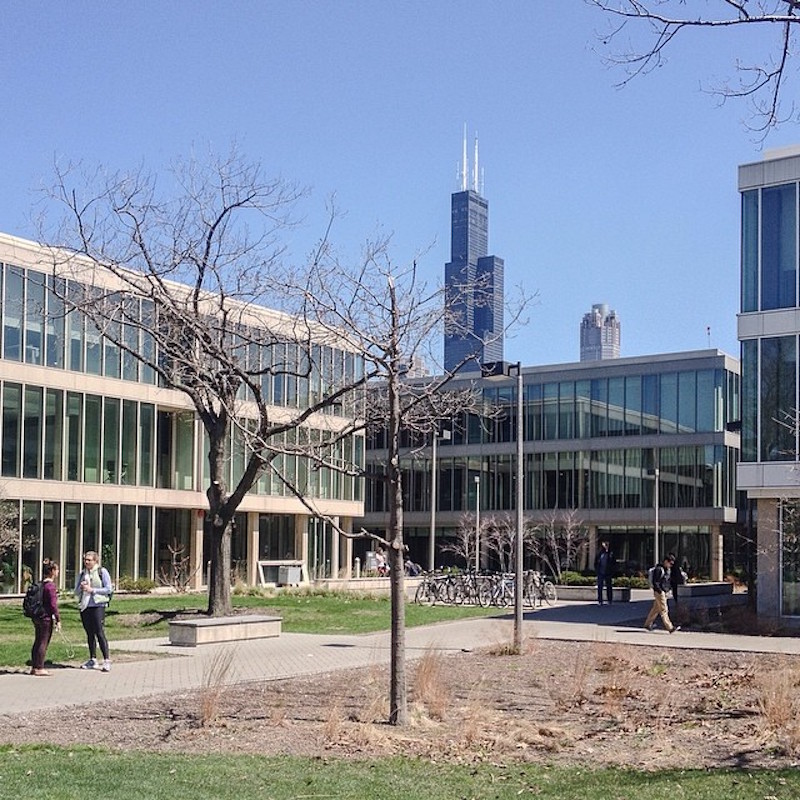To understand the wretched state of financial affairs at many of the nation’s public colleges and universities, one need look no further than The Prairie State.
Illinois is widely considered the worst-run state in the U.S. Crippling pension obligations, $150+ billion in debt and unpaid bills, deeply divided political leadership, the nation’s highest property taxes, all-time-high net out-migration population (105,217 in 2015), and, most alarming, a nearly two-year budget stalemate that has kept public and private businesses and institutions on edge. Sitting on $26 billion of outstanding general obligation bonds, Illinois claims the lowest credit rating among the states—BBB (Fitch Ratings), just two notches above the junk level—and, based on its present course, debt obligations are only going to worsen in the coming years.
The state’s public universities and colleges have been among the hardest hit by the budget impasse, losing (temporarily) as much as a third of their operating budget—all while dealing with flat or declining enrollment numbers. Illinois’ political and fiscal mess has left these institutions—especially the smaller, regional schools that can’t lean on private donors or sizable endowments to get by—gasping for air.
How can public institutions expect to survive and thrive in this turbulent environment? The answer, for one school anyways, is to think and act like entrepreneurs, to bypass the traditional funding and operational models—to escape forward.
Michael Amiridis, Chancellor of the University of Illinois at Chicago—one of just four public universities in the state that has seen enrollment grow in recent years—coined the term when describing the school’s strategies for growth. They include a mix of belt-tightening tactics—including reorganizing internal operations to improve efficiencies and reduce costs—and creative public-private partnerships, not only for capital infrastructure, but also for vital operations areas, like international student recruiting and online degree program delivery.
“We are using private capital to build the necessary infrastructure, whether it is human services, such as a global network of student recruiters, or capital projects, such as a new complex including dormitories and classrooms,” Amiridis wrote in a April 13 letter to Crain’s Chicago Business. He says the school is looking to create “reliable revenue streams” through infrastructure projects that offer a solid ROI and that will payoff for years to come.
To be sure, not all public schools face such chaos. Illinois offers the most extreme case. But enterprising institutions like UIC offer a path forward during an era when state and local government budgets across the nation are under heavy scrutiny. Colleges and universities would be wise not to expect a windfall of public funds anytime soon. Escape forward!
Related Stories
| Apr 13, 2011
Duke University parking garage driven to LEED certification
People parking their cars inside the new Research Drive garage at Duke University are making history—they’re utilizing the country’s first freestanding LEED-certified parking structure.
| Apr 12, 2011
Rutgers students offered choice of food and dining facilities
The Livingston Dining Commons at Rutgers University’s Livingston Campus in New Brunswick, N.J., was designed by Biber Partnership, Summit, N.J., to offer three different dining rooms that connect to a central servery.
| Apr 12, 2011
College of New Jersey facility will teach teachers how to teach
The College of New Jersey broke ground on its 79,000-sf School of Education building in Ewing, N.J.
| Mar 23, 2011
After 60 years of student lobbying, new activity center opens at University of Texas
The new Student Activity Center at the University of Texas campus, Austin, is the result of almost 60 years of students lobbying for another dedicated social and cultural center on campus. The 149,000-sf facility is designed to serve as the "campus living room," and should earn a LEED Gold certification, a first for the campus.
| Mar 18, 2011
Universities will compete to build a campus on New York City land
New York City announced that it had received 18 expressions of interest in establishing a research center from universities and corporations around the world. Struggling to compete with Silicon Valley, Boston, and other high-tech hubs, officials charged with developing the city’s economy have identified several city-owned sites that might serve as a home for the research center for applied science and engineering that they hope to establish.
| Mar 15, 2011
What Starbucks taught us about redesigning college campuses
Equating education with a cup of coffee might seem like a stretch, but your choice of college, much like your choice of coffee, says something about the ability of a brand to transform your day. When Perkins + Will was offered the chance to help re-think the learning spaces of Miami Dade College, we started by thinking about how our choice of morning coffee has changed over the years, and how we could apply those lessons to education.
| Mar 11, 2011
University of Oregon scores with new $227 million basketball arena
The University of Oregon’s Matthew Knight Arena opened January 13 with a men’s basketball game against USC where the Ducks beat the Trojans, 68-62. The $227 million arena, which replaces the school’s 84-year-old McArthur Court, has a seating bowl pitched at 36 degrees to replicate the close-to-the-action feel of the smaller arena it replaced, although this new one accommodates 12,364 fans.
| Mar 11, 2011
Historic McKim Mead White facility restored at Columbia University
Faculty House, a 1923 McKim Mead White building on Columbia University’s East Campus, could no longer support the school’s needs, so the historic 38,000-sf building was transformed into a modern faculty dining room, graduate student meeting center, and event space for visiting lecturers, large banquets, and alumni organizations.
| Mar 11, 2011
Texas A&M mixed-use community will focus on green living
HOK, Realty Appreciation, and Texas A&M University are working on the Urban Living Laboratory, a 1.2-million-sf mixed-use project owned by the university. The five-phase, live-work-play project will include offices, retail, multifamily apartments, and two hotels.















